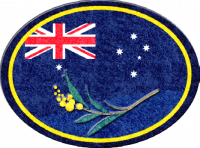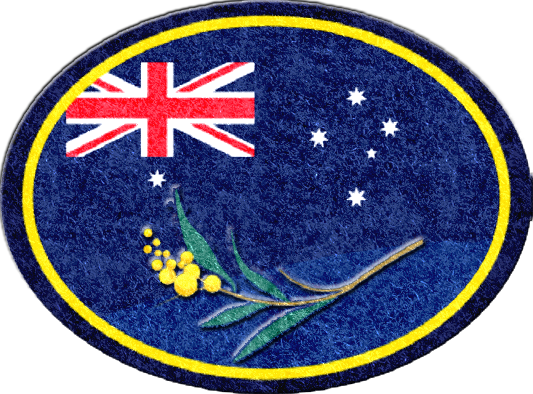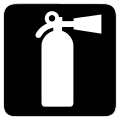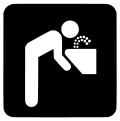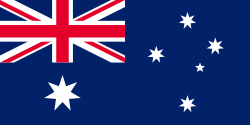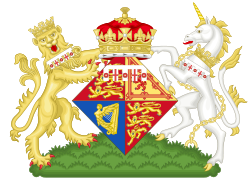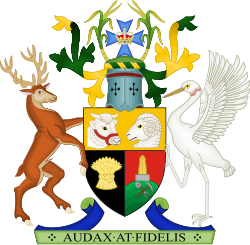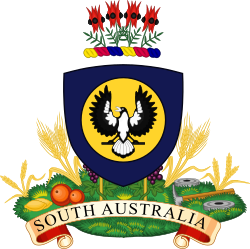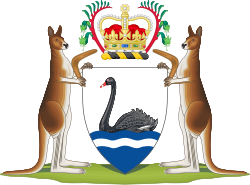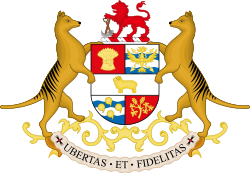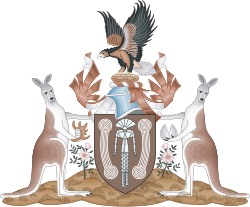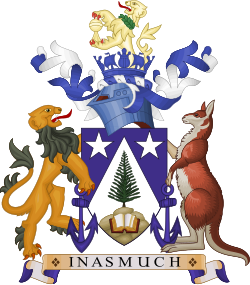AY Honor Symbols of Australia Answer Key
1
A symbol is a mark, sign, or word that indicates, signifies, or is understood as representing an idea, object, or relationship.
Symbols allow people to go beyond what is known or seen by creating linkages between otherwise very different concepts and experiences.
EXAMPLES OF SYMBOLS
2
Badge - a special or distinctive mark, token, or device worn as a sign of allegiance, membership, authority, achievement.
Emblem - a sign, design, or figure that identifies or represents something.
Figure - a written symbol other than a letter.
Logo - a graphic representation or symbol of a company name, trademark, often uniquely designed for ready recognition.
Token - something used to indicate authenticity, authority, etc.
3
3a
The dying lamb represents the bruised, battered, bloodied body of the Saviour. It speaks of a love so marvelous, so amazing, so divine, that it would rather take the condemnation, guilt, and penalty of sin upon itself than lose one of its children eternally.
3b
Baptism is defined as a Christian sacrament marked by ritual use of water and admitting the recipient to the Christian community. This rite is the personal and public identification with Jesus, his death, burial, and resurrection. The word baptism is derived from the Greek word Baptizo.
3c
The three significant parts of a Seventh-day Adventist communion service involves eating unleavened bread, drinking grape juice (fruit of the vine), and washing one another’s feet.
The bread represents Christ’s body, broken for us. In giving His body for the world, God made a way for us to be saved from the eternal consequences of sin, by believing in and accepting Jesus’ death and resurrection.
The fruit of the vine symbolizes Jesus’ blood that was shed for us. “This is My blood of the new covenant,” said Jesus, “which is shed for many for the remission of sins” (Matthew 26:28).
The disciples were taken aback at Jesus performing this humble service for them, which was normally considered a servant’s job. But in washing the feet of His disciples, Jesus gave us an example of true greatness.
During a communion service, Adventist churches provide for a ceremonial foot-washing called the “Ordinance of Humility.”
All these things are symbolic of Christ’s sacrifice to save us, and the humble, servant-like example He set. These actions follow Jesus’ words to His disciples, “Do this in remembrance of Me” (Luke 22:19, ESV). This is a special time of fellowship, of putting aside differences in status, or position, serving our brothers and sisters in the faith, and making our hearts right with each other and God.
4
Coat of Arms
Commonwealth of Australia and contains a shield with the symbols of the six Australian States. These symbols are enclosed in a border to represent federation in 1901, when the States united to form the Commonwealth of Australia. The shield is held by two native Australian animals, a kangaroo on the left and an emu on the right. The gold Federation Star above the shield has seven points. One point represents each of the six States and the seventh point represents all the territories. There is a scroll displaying the word 'Australia' beneath the shield. The national floral emblem, golden wattle, forms the background.
The first Commonwealth Coat of Arms was introduced on 7 May 1908. The current Coat of Arms was introduced on 19 September 1912.
National Flag
The Australian National Flag (the flag) was first flown in 1901. It is Australia's foremost national symbol and has become an expression of Australian identity and pride.
The flag has three elements on a blue background (field): the Union Jack, the Commonwealth Star and the Southern Cross.
The Union Jack in the upper left corner represents the history of British settlement.
Below the Union Jack is a white Commonwealth, or Federation star. It has seven points representing the unity of the six states and the territories of the Commonwealth of Australia. The star is also featured on the Commonwealth Coat of Arms.
The Southern Cross is shown on the flag in white. It is a constellation of five stars that can only be seen from the southern hemisphere and is a reminder of Australia’s geography.
National Anthem
From 1901 to 1974, Australia's national anthem was God Save the King/Queen. In 1973, a competition was held for a new national anthem.
The judges decided that the entries did not meet the standard of other popular Australian songs — Advance Australia Fair, Waltzing Matilda and Song of Australia.
They recommended that one of these three songs be chosen as the new national anthem. In a national poll conducted in 1974, 51.4% of people chose Advance Australia Fair.
As a result, the government changed the national anthem to Advance Australia Fair.
Advance Australia Fair was proclaimed the national anthem by the Governor-General on 19 April 1984.
National Floral Emblem
Australia's national floral emblem is the golden wattle. It was proclaimed by the Governor-General on 19 August 1988. When in flower, it is green and gold — Australia's national colours.
The floral emblem has been used in many official designs, including stamps, currency, awards and the Commonwealth Coat of Arms. The emblem of the Order of Australia is a single wattle flower.
National Wattle Day is celebrated on 1 September. It is around this time of year that the golden wattle starts to bloom.
National Colours
Green and gold were proclaimed the national colours on 19 April 1984, together with the national anthem.
These colours are mainly associated with Australia's sporting achievements in international events, such as the Olympic Games.
5
The shield is held up by the native Australian animals, the kangaroo and the emu, which were chosen to symbolize a nation moving forward, based on the fact that neither animal can move backwards easily.
6
New South Wales - Coat of Arms
King Edward VII approved the Coat of Arms in October 1906.
The central red cross, in a larger silver cross, is the Red Cross of St George, the old badge of the Colony.
The four stars on the cross represent the Southern Cross and referred to so often in our poetry and literature as a national symbol. The lion in the centre is the English Lion derived from the British Arms. The first and fourth quarterings are the Golden Fleece, a reference to our great achievement in the wool industry. The second and third quarterings are the Wheat Sheaf, representing our second and great primary industry. The crest, the Rising Sun, continues the use of our earliest colonial crest, representative of a newly rising country. The livery colours of the Arms, blue and white, mirror the States sporting colours. The right-hand supporter, the Lion is a further recognition of the British origin of our first settlers. For the left-hand supporter, the use of the kangaroo is self-explanatory.
The motto of New South Wales “Orta recens quam pura nites” may be translated “Newly risen how brightly you shine” and, like the rising sun in the crest, is representative of our continuing progress and development.
Victoria - Coat of Arms
The Victorian Coat of Arms was granted by King George V by Royal Warrant of 6 June 1910. The Victorian Coat of Arms is used by State Government bodies, but not the Supreme or County Courts.
The Shield was blue with five silver stars thereof arranged so as to represent the Crux Australis.
Rising from a Crest Wreath comprising silver and blue alternate twists (the official colours of the State), the Crest is made up of the upper part of a kangaroo shown in its natural colours. The beast supports with its claws a Royal Crown.
The Supporters, so called from their function of ‘supporting’ the Shield on either side, are human figures. They are both classical in conception. That to the viewer’s left wears a laurel wreath crown and representing, as she does, ‘Peace’ carries a sprig of olive in her hand. The corresponding figure on the viewer’s right is a personification of ‘Prosperity’. She has upon her head a circlet of golden cereal, and with her exterior hand supports a Cornucopia, symbolic of the result of peace.
The image which inspired the Supporters is again expressed in the motto: Peace and Prosperity – interestingly enough, the first motto to be in English among the Arms of Public Authority in the country.
Queensland - Coat of Arms
The Queensland Coat of Arms, the oldest State Arms in Australia, was granted to the Colony of Queensland by Queen Victoria in 1893.
The Coat of Arms is a heraldic device, symbolizing the Queen’s constitutional authority in the State.
In line with economic trends in the nineteenth century, primary industries take pride of place on the Arms. Rural activities are represented by a sheaf of wheat, the heads of a bull and a ram, and by two stalks of sugar cane. The importance of mining is indicated by a column of gold rising from a heap of quartz.
The State motto, Audax at Fidelis, means “Bold but faithful”.
The Coat of Arms was given a more modern rendering when the supporters, the red deer and the brolga, were assigned in 1977, the Queen’s Silver Jubilee year.
South Australia - Coat of Arms
The original Coat of Arms was granted by King Edward VIII on the 100th anniversary of its foundation on 20 Nov 1936.
The present coat of arms was conferred by Queen Elizabeth II on 19 April 1984.
It consists of the State badge resting on a grassy mount with ripening wheat and barley, fresh fruit, metal cogs of industry and a miner's pick, objects representing all aspects of industry in South Australia.
The crest above the shield has four sprigs of the State's floral emblem, Sturt's Desert Pea, on a collar of the State's colours of red, blue and gold.
The motto is simply "South Australia".
Western Australia - Coat of Arms
The Coat of Arms of the State of Western Australia was granted by Her Majesty, Queen Elizabeth II, by Royal Warrant dated the 17th day of March, 1969.
For Arms: A silver shield with a base of rippled blue across which is a thin wavy silver stripe. A black swan, in natural colour, and in horizontal position is floating on the blue base which represents water.
For Crest: Resting on a gold and black wreath is the Royal Crown between two Kangaroo Paw flowers accurately depicted.
For Supporters: Two red kangaroos support the shield held between them. A boomerang accurately depicted is held by each in their other forepaw.
The Coat of Arms is to be used on seals, shields, banners or otherwise according to the Laws of Arms. Unauthorized reproduction of this Coat of Arms is an offence under the Armorial Bearings Protection Act 1979.
Tasmania - Coat of Arms
The Tasmanian coat of arms was approved by Royal Warrant from King George V on 29 May 1917 and proclaimed in 1919.
It features a shield supported by two thylacines (Tasmanian tigers, thought to be extinct). The shield bears images of the State's major rural industries - wheat, apples, hops, sheep - beneath a red lion holding a pick and shovel, symbolic of mining activities.
The Latin motto at the bottom is Ubertas et fidelitas: fertility and faithfulness'.
Northern Territory - Coat of Arms
Officially granted by the Queen in 1978, the formal description of the arms is, representations in the Australian Aboriginal manner of an Arnhem Land rock painting of a woman with stylized internal anatomy between in dexter chief and base two symbolic representations of camp sites joined by journey or path markings in the manner of the Central Australian Aboriginals and in sinister chief and base the like, all Argent.
For the crest: upon a wreath a Wedge-tailed Eagle wings elevated grasping with its talons an Australian Aboriginal stone Tjurunga proper.
For the supporters: On either side a Red Kangaroo guardant, that to the dexter holding in the dexter forepaw a Chiragra Spider Conch and similarly that to the sinister in its sinister forepaw a True Heart Cockle.
For the Compartment: Growing from a Compartment comprising a grassy sandy mound Sturt’s Desert Roses.
Norfolk - Coat of Arms
The current official Coat of Arms of Norfolk Island was adopted in October 1980.
On the shield is a Norfolk Island Pine Tree placed on a rocky mount. The two stars on the shield refer to the Arms of Australia, New South Wales as well as the Arms of Captain James Cook – the discoverer of the Island.
The two anchors and the naval crown represents the maritime history of the first settlers on the Norfolk and Pitcairn Islands. It also reflects the importance of seas and oceans in the history of these islands.
The book on the shield stands for the Bible taken from HMS Bounty.
Supporting the shield is a lion and a Kangaroo. The Lion symbolizes the Island’s historic ties with UK, New South Wales, and Tasmania. The Kangaroo alludes to the Island’s ties with Australia. The covered cup on the shield is taken from the arms of the founder of Pitcairn settlement – Fletcher Christian. The lion wears a laurel wreath obtained from the arms of Captain James Cook.
The motto: “INASMUCH” is taken from the Gospel of Matthew 25:34.
7
8
9
10
11
